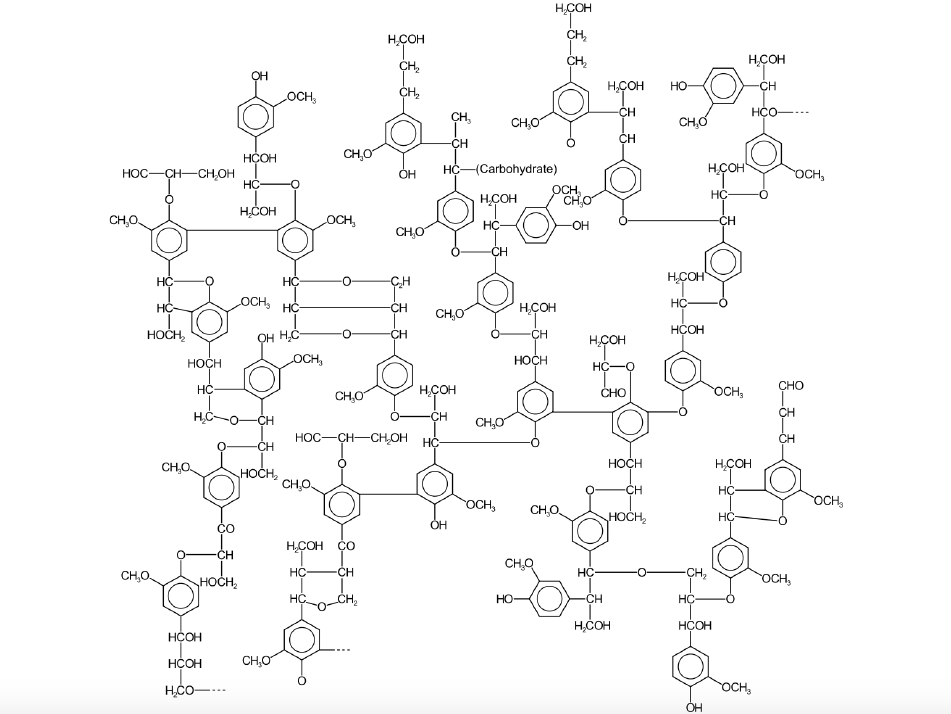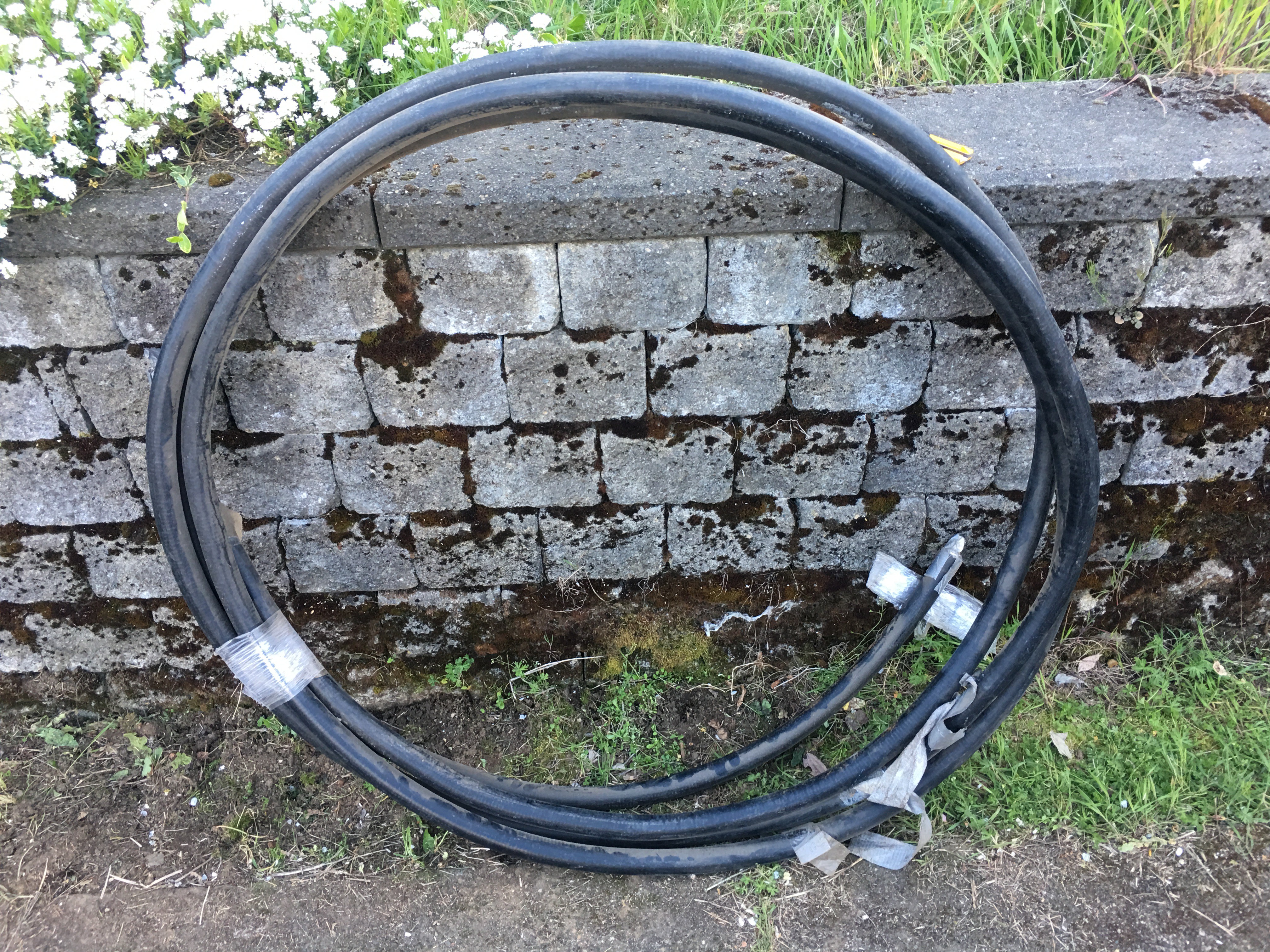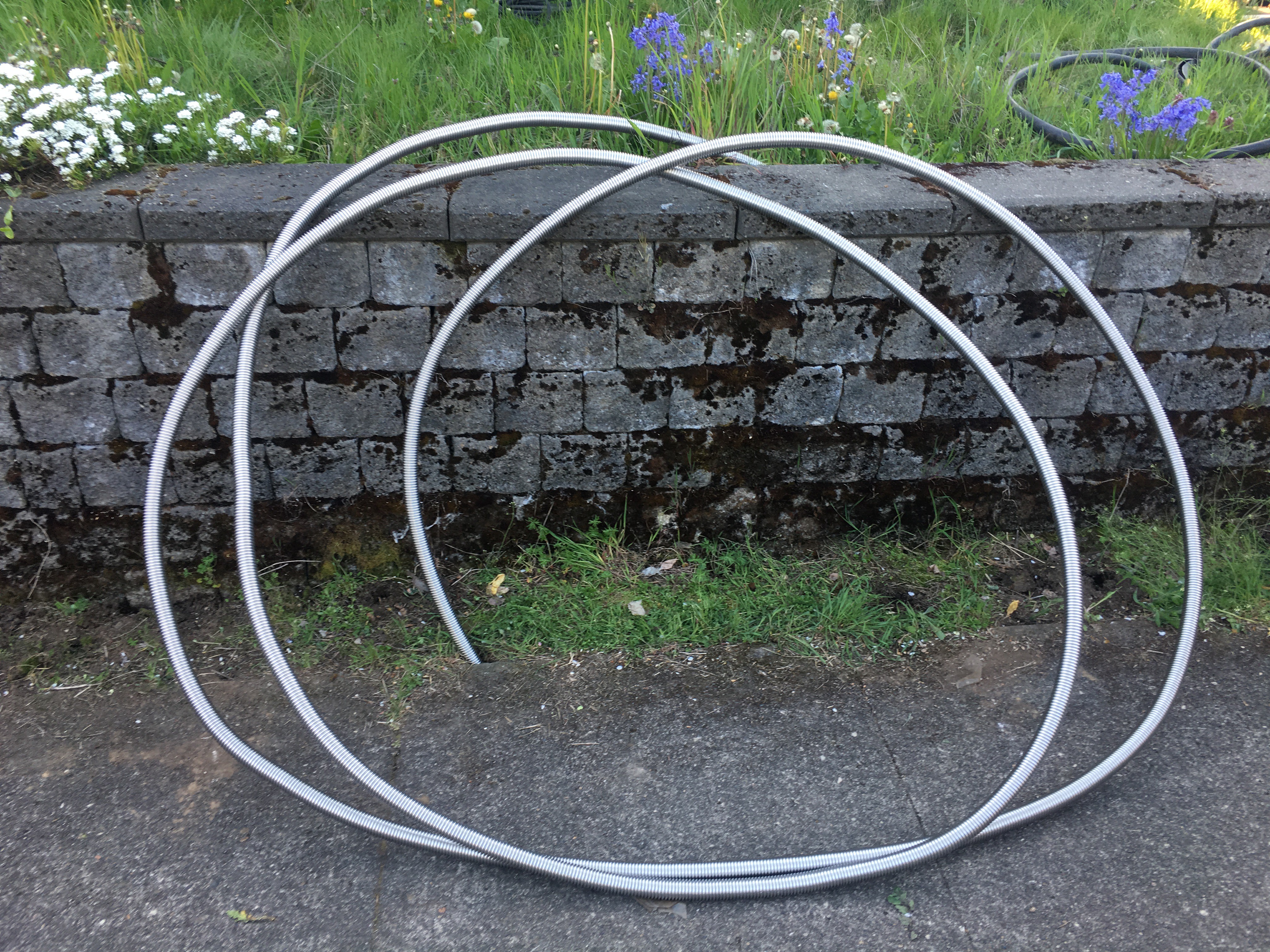You condense! You condense! OK that's enough of that. Let's talk about condensers. A big part of this project is the condenser system. When you heat biomass or some plastics (imagine a keg filled with woodchips for now) in a closed vessel without access to oxygen, the molecules that make up the wood will start to decompose into smaller molecules. Here is the chemical structure of Lignin- one of the primary components of wood.

Notice how this molecule is just a crazy arrangement of Carbon, Oxygen, and Hydrogen? It's made up of the same molecules that oil and gas (and you) are, but it's much larger and heavier. In order to use it as a fuel, we need to break it down into smaller bits. In a perfect reactor, these wood molecules would get so hot so fast that they would all break ALL the way down to their simplest possible components- Hydrogen gas (H2) and Carbon Monoxide (CO), which is what we will use to run our engine.
In practice, however, there will always be uneven heating, especially when the reactor is just heating up. So complex hydrocarbons will tend to break apart into slightly-less complex hydrocarbons, which looks like a thick, acrid smoke. These complex hydrocarbons are gaseous at high temps, but will condense out of the smoke at lower temperatures. So if you can heat up biomass, and then cool the smoke that comes off ALLLLL the way down to ambient temperatures (around 70F), all of the gummy, nasty, sticky, and sometimes toxic tars and solvents will condense out of the gas, and the only gasses that remain gasses at ambient temps are the CO and H2 that we will use to run the engine.
So we need a cheap, safe way to condense out these tars. You can create a system that captures these molecules and sorts them by their molecular weight, which allows you to produce analogs for diesel and gasoline, but that's a phase 2 project. For now, we want to build a system that will:
-Be able to handle high temps without corroding
-Be readily available so that people can replicate it
-Be easy to work with and require minimal tools or welding
-Have a high surface area and/or thin walls for high heat transfer
The best solution I have come up with to solve this problem is using "CSST" flexible gas tubing. This stuff is so great. It's marketed as a flexible piping system for natural gas, and you can buy it in 75-ft rolls at home depot or lowes. But the great thing about this stuff is that once it is removed from a house, it generally can't be re-installed to code, so if there is a ReStore or other material salvage spot in your city, it's pretty easy to find used. I scored a huge roll of it at the Rebuilding Center in Portland.




Cut away the plastic sheathing (and keep it, I think it's Polyethylene, and we can shred it later...) and you've got an uncoated, high surface area hand-flexible stainless steel condenser! For simplicity's sake, I'm going to try and build a back-flow design, where the gas is cooled in an upward spiral, and the condensed tars drip back into the reactor. But in the future I'd like to design a multiple condenser system that collects the tars as they cool, to harvest valuable liquid fuels and chemicals. But doing so is complicated and dangerous (some of these compounds are VERY VERY toxic. Please don't f*ck around with them, or, if you do, please at least be professional about it)
 Sam Smith
Sam Smith
Discussions
Become a Hackaday.io Member
Create an account to leave a comment. Already have an account? Log In.